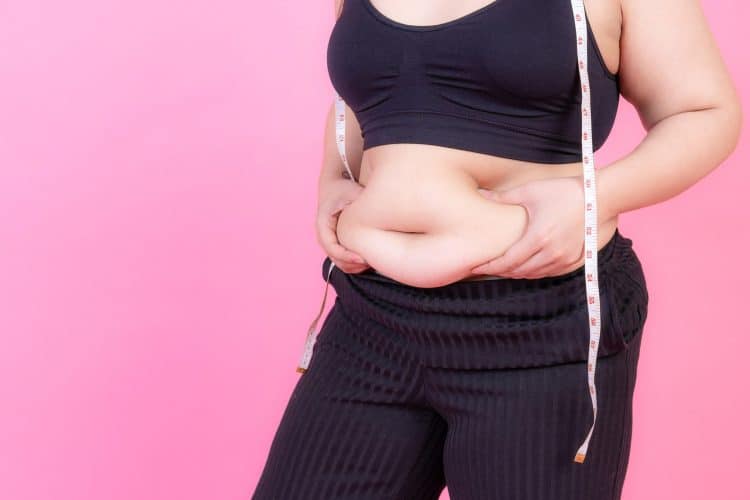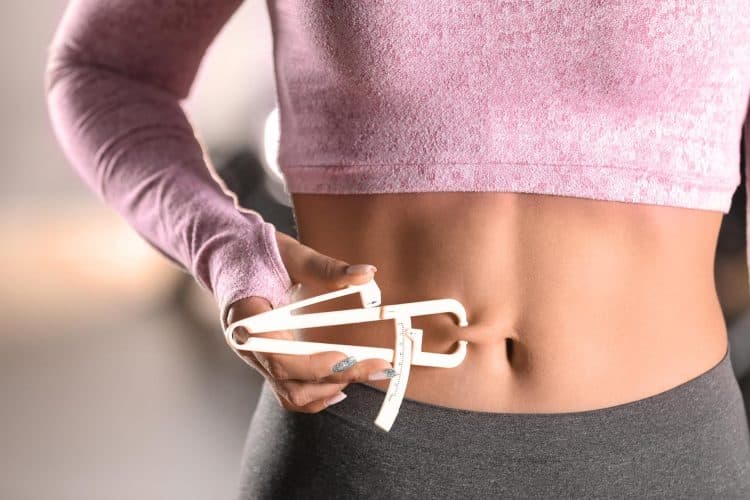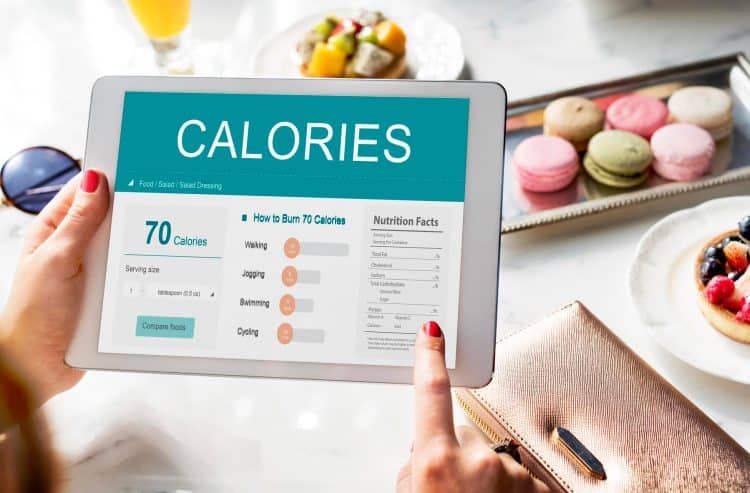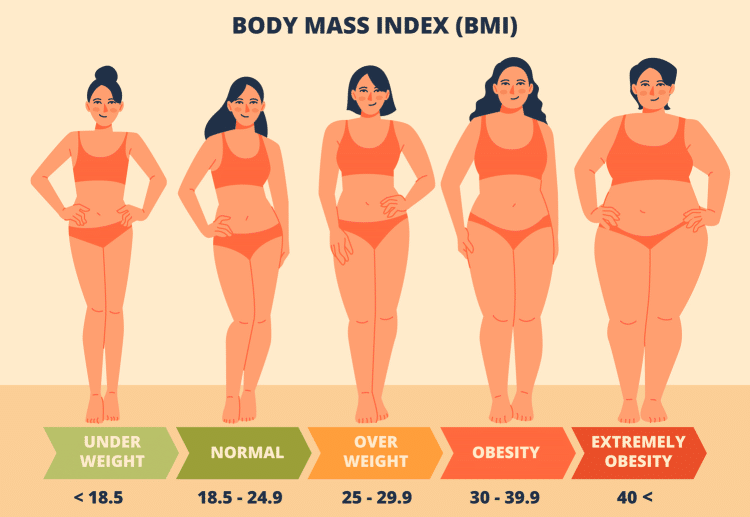The average body fat percentage varies by age and gender. For those aged 20-39, women usually have 21-32% body fat, while men have 8-19%. In the 40-59 age bracket, both genders see a slight increase, with women at 23-33% and men at 11-21% body fat. In the 60-79 segment, body fat percentages rise further for women (24-35%) and men (13-24%).
I realized the importance of understanding body fat percentage and its impact on fitness levels early in my lifting career. It remains a primary metric for evaluating my overall health and well-being.
Understanding body fat percentage is essential for athletes and recreational exercisers alike. It can help track progress accurately and guide fitness and nutrition choices.
According to a study published in The Scientific World Journal, knowing body fat percentage is crucial for assessing the potential health risks associated with obesity, such as heart disease, cancer, and diabetes. [1]
In this article, we delve into the intricacies of average body fat percentage, including what it means, how to calculate and use it to set realistic fitness goals, and how to lose body fat.
Average Body Fat Percentage For Men and Women

Level Up Your Fitness: Join our 💪 strong community in Fitness Volt Newsletter. Get daily inspiration, expert-backed workouts, nutrition tips, the latest in strength sports, and the support you need to reach your goals. Subscribe for free!
Body fat percentage (BF%) measures the amount of fat tissue relative to your total body mass.
Body fat percentage can help assess the amount of fat tissue in your body. It offers insights beyond the mere digits displayed on your weighing scale.
According to the American Journal of Clinical Nutrition, here are the average body fat percentage for males and females in different age groups: [2]
| Age | Body Fat Percentage for Men | Body Fat Percentage for Women |
| 20-39 | 8%-19% | 21%-32% |
| 40-59 | 11%-21% | 23%-33% |
| 60-79 | 13%-24% | 24%-35% |
Women usually have a higher average body fat percentage than their male counterparts due to the demands of childbirth and other hormonal functions.
Women generally have 10-12% of body fat stored as essential fats, whereas men hold 2-4% as essential fat.
The lower essential fat percentage is one of the primary reasons why men usually tend to see their abs faster than women on a weight loss program.
Factors Affecting Average Body Fat Percentage
An individual’s body fat can vary depending on multiple factors, including:
Gender
Men and women have different body compositions. For men, a healthy body fat percentage typically ranges from 6% to 24%. Women, on the other hand, tend to carry a bit more fat due to biological differences and hormonal influences. For the ladies, the healthy range generally falls between 16% and 30%.
Now, these are just ballpark figures, and there can be exceptions.
Age
Age is another significant factor to consider. As we get older, our bodies tend to accumulate fat and lose muscle mass. This natural process can shift the ideal body fat percentage.
Younger adults might aim for the lower end of the healthy range, while seniors may find themselves within the higher limits and still be considered healthy.
The Athletic Edge
Are you an athlete or someone who’s passionately committed to a consistent workout routine? If so, your body fat percentage may differ from the average Joe or Jane.
Athletes, especially those in sports like track and field or CrossFit and bodybuilding, often maintain lower body fat percentages, sometimes even dipping below 10%. But remember, this level of leanness requires meticulous dietary planning and rigorous training.
Essential Fats
Now, here’s the thing – not all body fat is created equal.
As mentioned above, men and women hold a certain amount of body fat in their repositories to maintain normal bodily functions like hormonal regulation, temperature control, and cushioning vital organs.
Remember, each individual is built differently. You might hold more body fat than your training partner due to your genetics, height, and body structure and still look leaner than them.
It’s important not to compare yourself to people who have a lesser body fat percentage and chase that number.
People striving to win a bodybuilding show will have a significantly different body fat percentage goal than people aiming to optimize their overall health and well-being.
Consider your daily functioning and body needs before setting a new weight loss and body fat percentage goal.
Benefits of Calculating Body Fat Percentage
Calculating your body fat percentage can help you determine your LBM (Lean Body Mass) and FBM (Fat Body Mass).
Remember, not all fat is created equal. Body fat percentage is the metric that discerns this difference.
Why does body fat percentage matter? Well, it’s not just about aesthetics; it’s about health. A healthy body fat percentage is essential for several reasons, including:
- Body fat serves as an energy reserve, ensuring you have the fuel needed for daily activities and workouts.
- It helps regulate body temperature and protect vital organs.
- Body fat is a key player in hormone production and immune function.
As a rule of thumb, you want to maintain the average essential body fat for your gender plus the LBM. Your main goal must be to shed the FBM.
Difference Between Body Fat Percentage and BMI
Many people confuse body fat percentage (BF%) with body mass index (BMI). However, they are different entities
BMI calculates your body mass based on height and weight and then categorizes individuals into different weight classes, ranging from underweight (<18.5) to extremely obese (35 or greater).
BMI can offer you a rough estimate of your overall health. That said, it doesn’t account for your weight distribution, notably the amount of muscle you hold in contrast to fat.
While calculating body fat percentage also requires your height, weight, and age, additional inputs like wrist, waist, hips, and forearms can give you a more precise assessment of your body’s composition.
Methods of Measuring Body Fat Percentage
Now that you know the average body fat percentage for different age groups, it is time to learn how to measure your body fat percentage.
Level Up Your Fitness: Join our 💪 strong community in Fitness Volt Newsletter. Get daily inspiration, expert-backed workouts, nutrition tips, the latest in strength sports, and the support you need to reach your goals. Subscribe for free!
Given below are the two main methods:
DEXA Scans (Dual-Energy X-Ray Absorptiometry)
Dexa scans are the gold standard for body composition assessment. They employ low-dose X-rays to provide a comprehensive analysis of your body fat, including subcutaneous (under the skin) and visceral (around organs), lean tissue, and bone density.
Top-tier athletes usually go for DEXA scans for accurate body fat measurements.
Although highly accurate, DEXA scans are not always readily available or affordable for everyone.
Body Fat Calculators
Unless you are a serious athlete, sports star, or an A-list celebrity, you probably don’t want to break the bank on a DEXA scan. You want a method that is just as accurate but comes at a fraction of the price.
Well, I have an even better solution — online body fat percentage calculators. These are absolutely free to use.
Use our Body Fat Calculators to determine how you stack up against your peers:
Our body fat calculator uses age, weight, height, and other measurements such as skinfold thickness, bioelectrical impedance, or circumferences to estimate body fat percentage.
Although body fat calculators are not as precise as DEXA scans, they will do the trick for most people.
Beginners looking to shed body fat and weight should work with a professional with a proven track record.
While this might cost some money upfront, it will save you a lot of wasted time, effort, and potential injuries.
Body Fat Percentage Chart
After using the body fat calculator, compare your measurement with the following data:
| Women (% fat) | Men (% fat) | |
| Essential Fat | 10-12% | 2-4% |
| Athletes | 14-20% | 6-13% |
| Fit | 21-24% | 14-17% |
| Acceptable | 25-31% | 18-25% |
| Obese | 32% plus | 25% plus |
Although knowing the averages is good, they are not always ideal for everyone.
Your average body fat percentage can vary depending on the following factors:
- Individual Needs: Your ideal body fat percentage can vary depending on your genetics, daily habits, goals, overall health, and fitness objectives.
- Fitness Goals: Your training objectives will influence your body fat percentage. A professional bodybuilder aiming for a competition-ready lean physique will have a vastly different ideal body fat percentage than someone looking for sustainable weight loss or improved overall health.
- Athletes: Athletes tend to hold a lower body fat percentage because of the strenuous physical activities they are subject to.
Notably, people dealing with health conditions might find their ideal body diverges from the norm due to medical considerations. Consulting your healthcare provider before starting a new diet or exercise regimen is always recommended.
Obesity and Body Fat: Understanding the Connection
Obesity refers to an excess accumulation of body fat that has reached a point where it poses a significant risk to one’s health and overall well-being. It is not limited to a number on the scale or a calculator; it’s about the quality and distribution of body weight.
Now, you might be wondering, “How much is too much when it comes to body fat?” Well, that’s where the numbers come into play. For males, a body fat percentage of 25% or higher is typically considered indicative of obesity. For females, the threshold is slightly higher at 32% or more.
Health Issues Associated with Obesity
Obesity isn’t just about physique aesthetics; it’s a health issue that’s spreading like wildfire.
Contrary to what most people think, obesity is more than a physiological problem. It can affect you psychologically, too.
From a physical standpoint, it increases the risk of conditions such as heart disease, diabetes, hypertension, and even certain cancers. But it doesn’t stop there; the toll on mental health is equally substantial, with obesity often contributing to depression, anxiety, and decreased quality of life. [3][4]
Reducing Body Fat
As someone who has been in the trenches of health and fitness for over 16 years, I can attest that losing body fat boils down to three things — a balanced diet, regular exercise, and lifestyle adjustments.
Diet
Many people make the mistake of severely cutting their calories while trying to lose body weight. However, this can lead to harsh consequences like nausea, headaches, and diarrhea.
Eat a balanced diet, ensuring that you meet your daily macro and micronutrient targets. Use our TDEE calculator to find your ideal daily caloric goal. Use a balance of protein, carbs, and fats as per your specific goals to achieve the target
Proteins are your muscle-building allies, carbs fuel your workouts, and fats (yes, fats) are essential for hormonal balance and nutrient absorption.
Exercise
It’s not just about lifting weights or sprinting; it’s about finding a balance between strength training, cardio, and flexibility exercises. Strength training builds muscle, which in turn boosts your metabolism, helping you burn fat more efficiently.
Cardiovascular exercises improve your heart health and assist in burning those extra calories. And let’s not overlook flexibility exercises. They’re crucial for preventing injuries and maintaining overall body health.
Lifestyle
To lose body fat and keep it off, you must fix your lifestyle.
Adequate sleep, stress management, and staying hydrated are essential components of fat loss.
The health and fitness world is full of fads that involve extreme measures and promise quick fixes. These are not only unsustainable but can be detrimental to your health.
Find a sustainable diet, training, and recovery program that suits your lifestyle and stick to it for the long term.
Conclusion
According to the American Journal of Clinical Nutrition data, the combined average body fat percentage for women across all age groups is approximately 28.33%, whereas it is 16.67% for males.
Remember, the average body fat percentage is not a number etched in stone. You must find the right balance and a number that aligns with your goals and lifestyle. If you have any questions whatsoever about body fat percentages, drop them in the comments below, and I’ll be happy to help.
References
- Shao YE. Body fat percentage prediction using intelligent hybrid approaches. ScientificWorldJournal. 2014;2014:383910. Published 2014 Mar 2. doi:10.1155/2014/383910
- Gallagher D, Heymsfield SB, Heo M, Jebb SA, Murgatroyd PR, Sakamoto Y. Healthy percentage body fat ranges: an approach for developing guidelines based on body mass index. Am J Clin Nutr. 2000;72(3):694-701. doi:10.1093/ajcn/72.3.694
- Guillemot-Legris, O., & Muccioli, G. (2017). Obesity-Induced Neuroinflammation: Beyond the Hypothalamus. Trends in Neurosciences, 40, 237-253. https://doi.org/10.1016/j.tins.2017.02.005.
- Cohen, J., & Cohen, D. (2015). Cardiovascular and Renal Effects of Weight Reduction in Obesity and the Metabolic Syndrome. Current Hypertension Reports, 17, 1-7. https://doi.org/10.1007/s11906-015-0544-2.













